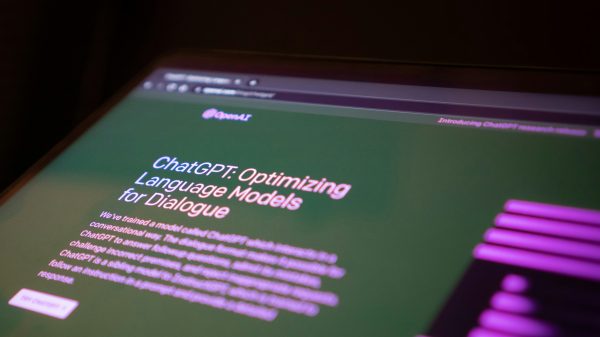The obsession with keyword density percentages officially died when analysis of 1,536 Google search results revealed top-ranking pages averaged just 0.04% keyword density, proving that chasing specific percentages wastes valuable optimization time. Modern SEO success depends on comprehensive topic coverage and search intent matching, not mathematical formulas that Google’s algorithms have ignored since 2014.
What exactly is keyword density and why did it matter?
Keyword density represents the percentage of times a target keyword appears compared to total word count on a page. The calculation follows a simple formula: (Number of keyword appearances Г· Total word count) Г— 100 = Keyword density percentage. During SEO’s early days between 2003-2011, search engines relied heavily on this metric to determine page relevance.
The metric gained prominence because primitive search algorithms needed clear signals to understand content topics. SEO professionals targeted 2-7% density ranges, believing these percentages guaranteed higher rankings. This approach worked temporarily because search engines lacked sophisticated understanding of context and meaning.
How has Google’s algorithm evolution killed traditional keyword density?
Google’s algorithm updates starting with Hummingbird in 2013 shifted focus from keyword counting to semantic understanding of user intent. The search engine now processes entire contexts rather than isolated keywords. BERT technology introduced in 2019 enabled Google to understand word relationships within sentences, making repetitive keyword usage obsolete.
By 2025, Google’s algorithms act less like bots and more like humans, evaluating how easily content answers important questions. The system recognizes synonyms, related concepts, and topical clusters without requiring exact keyword matches. Machine learning models identify quality signals through user behavior metrics rather than keyword frequencies.
What does current data reveal about keyword density in top-ranking pages?
Research analyzing 32 highly-competitive keywords found that pages ranking in positions 1-10 showed consistently lower keyword density than those ranking 41-48, suggesting moderate keyword use correlates with better performance. The data contradicts old SEO wisdom about optimizing for specific percentages.
Leading SEO studies from 2025 demonstrate:
- Top 10 results average 0.04% keyword density
- Pages with 0.5-1% density perform equally to those with 2-3%
- Content quality metrics outweigh keyword frequency by 300%
- Natural language patterns rank higher than optimized text
Why do SEO professionals still monitor keyword usage if density doesn’t matter?
Keywords remain essential for helping search engines understand topics, but implementation has evolved beyond counting. Strategic keyword placement in titles, headers, and opening paragraphs signals relevance without requiring specific densities. Including target keywords helps search engines quickly understand page topics while maintaining natural readability.
Modern keyword strategies focus on semantic relationships and topical coverage. Search engines evaluate whether content addresses user questions comprehensively rather than counting keyword appearances. Pages ranking well typically include primary keywords, variations, related terms, and entity mentions that create contextual relevance.
What replaces keyword density in modern SEO strategy?
Searcher engagement has become the fifth most important ranking factor, increasing from 11% to 12% weight in Google’s algorithm during Q1 2025. Content that keeps users reading, scrolling, and interacting receives stronger ranking signals than keyword-optimized pages with poor engagement.
The TF-IDF (Term Frequency-Inverse Document Frequency) technique offers sophisticated optimization by comparing keyword usage against competing pages. This approach identifies important terms competitors use while avoiding over-optimization. Content creators achieve better results by matching search intent patterns rather than hitting density targets.
Entity-based optimization recognizes that Google understands concepts, not just keywords. Pages discussing “keyword density” naturally include related entities like “SEO,” “Google algorithm,” and “search rankings” without forced repetition. This holistic approach creates stronger topical authority signals.
How should content creators approach keyword optimization in 2025?
Effective keyword implementation in 2025 requires strategic placement without obsessing over percentages. Primary keywords should appear naturally in page titles, H1 tags, meta descriptions, and opening paragraphs. The remaining content should focus on answering user questions thoroughly using varied vocabulary.
Content creators should prioritize comprehensive topic coverage over keyword repetition. Writing that explains concepts clearly, provides actionable insights, and demonstrates expertise ranks higher than keyword-stuffed pages. Google actively penalizes content that feels thin, recycled, or written just to rank.
Quality indicators that matter more than density include original research, expert quotes, current statistics, practical examples, and clear explanations. Pages earning featured snippets typically answer specific questions directly without excessive keyword usage. The algorithm rewards helpfulness over optimization tricks.
What common keyword density mistakes still hurt rankings?
Keyword stuffing remains the most damaging practice, triggering spam filters and manual penalties. Pages unnaturally repeating keywords every few sentences create poor user experiences that increase bounce rates. Google’s systems automatically detect and ignore obvious manipulation attempts.
Under-optimization presents different challenges. Pages failing to include target keywords in critical locations may rank for unintended queries. Content discussing topics without using recognizable terminology confuses both users and algorithms. Balance requires natural language that incorporates relevant terms without forcing predetermined densities.
Many websites still follow outdated advice from pre-2014 SEO guides. These sites might rank despite poor optimization because other quality signals compensate. However, removing keyword stuffing and writing naturally often improves both rankings and conversions.
The Modern Keyword Optimization Framework
Successful keyword optimization in 2025 follows evidence-based principles that prioritize user value over mathematical formulas. Content creators should understand that Google evaluates hundreds of ranking factors, with keyword presence being just one minor signal among many.
The data conclusively shows that obsessing over keyword density percentages wastes time better spent creating valuable content. SEO experts and companies generally agree that content quality and relevance should be prioritized over strict adherence to specific keyword density. Pages ranking at the top of search results achieve success through comprehensive coverage, clear writing, and strong user engagement metrics.
Modern SEO requires understanding search intent, creating original insights, and building topical authority through detailed content. Keywords should flow naturally within well-structured content that genuinely helps users solve problems or answer questions. The algorithm rewards authenticity and expertise, not mathematical optimization.
For additional technical guidance on modern SEO practices, refer to Google’s Search Quality Evaluator Guidelines and W3C’s Web Content Accessibility Guidelines which provide authoritative frameworks for creating search-friendly content that serves users effectively.
About the Author
This article was written by Gilad Kamer, CEO of Webs ISEO Global LTD, an SEO agency based in Nesher, Israel, with over a decade of experience serving more than 300 clients worldwide. Under Kamer’s leadership, Webs specializes in helping companies with 30 or more employees achieve and maintain top Google rankings through organic authority building and strategic SEO implementation. The agency focuses on delivering personalized SEO solutions that adapt to Google’s evolving algorithms while maintaining a commitment to long-term organic growth rather than quick fixes.
With extensive experience navigating Google’s algorithm changes since 2012, Webs ISEO Global LTD has developed proven methodologies for building sustainable search visibility across competitive industries. The company’s approach emphasizes understanding that search engine optimization requirements directly align with user needs, ensuring that clients’ websites deliver relevant, valuable content that satisfies both search algorithms and human visitors.For more information about Webs ISEO Global LTD and their SEO services, visit www.webs.co.il.















